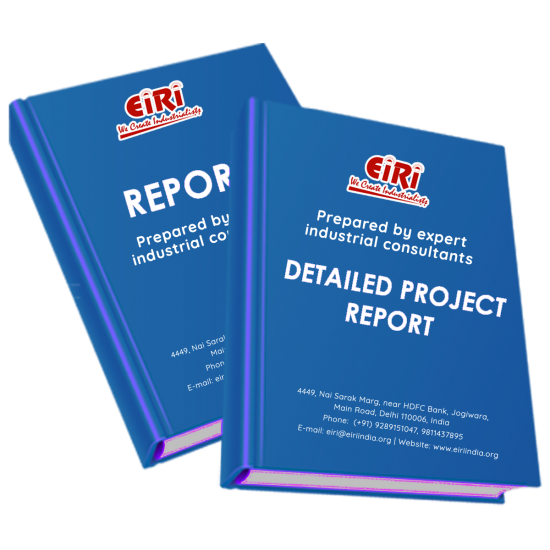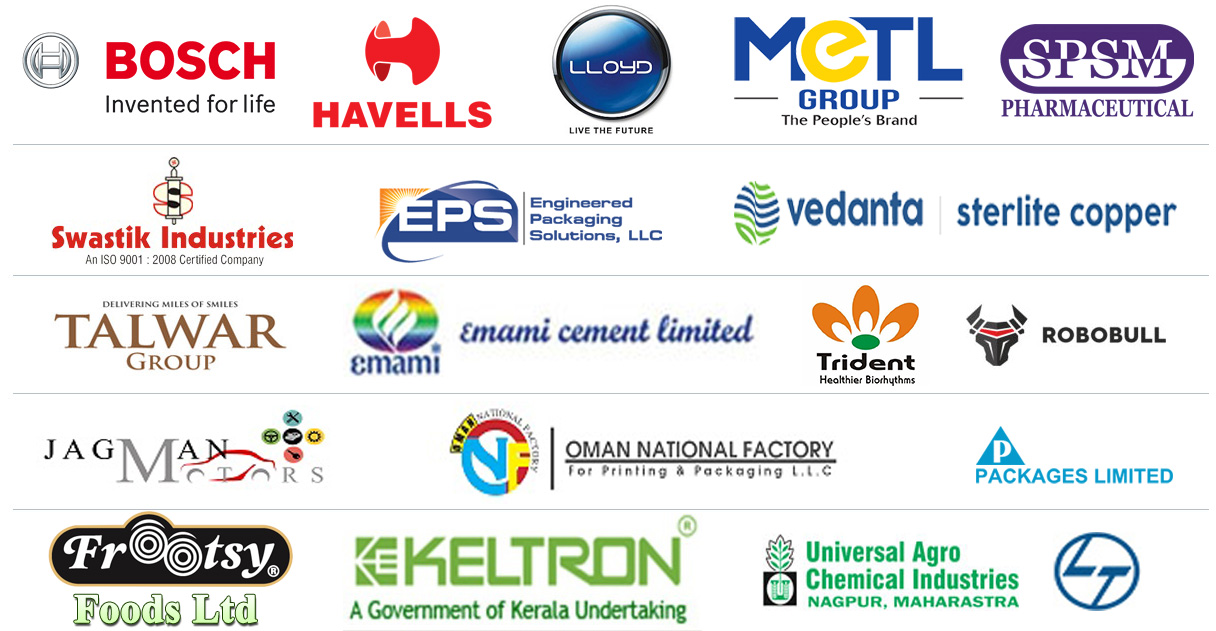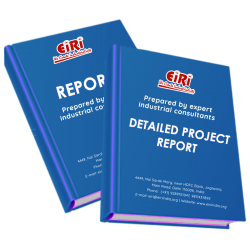Detailed Project Report on polyol used for polyurethanes

- More than 40 years of experience
- Managed by expert industrial consultants
- ISO 9001-2015 Certified
- Registered under MSME, UAM No: DL01E0012000
- 24/5 Research Support
Get your quesries resolved from an industry expert. Ask your queries before report or book purchase. - Custom Research Service
Speak to the our consultant to design an exclusive study to serve your research needs. - Quality Assurance
All reports are prepared by highly qualified consultants & verified by a panel of experts. - Information Security
Your personal & confidential information is safe & secure.
POLYOL USED FOR POLYURETHANES
[EIRI/EDPR/1027] J.C. 9668
INTRODUCTION
Polyols are higher molecular weight materials manufactured from an initiator and monomeric building blocks. They are most easily classified as polyether polyols, which are made by the reaction of epoxides (oxiranes) with active hydrogen containing starter compounds, or polyester polyols, which are made by the polycondensation of multifunctional carboxylic acids and hydroxyl compounds. They can be further classified according to their end use as flexible or rigid polyols, depending on the functionality of the initiator and their molecular weight. Taking into account functionality, flexible polyols have molecular weights from 2,000 to 10,000 (OH# from 18 to 56). Rigid polyols have molecular weights from 250 to 700 (OH# from 300 to 700). Polyols with molecular weights from 700 to 2,000 (OH# 60 to 280) are used to add stiffness or flexibility to base systems, as well as increase solubility of low molecular weight glycols in high molecular weight polyols.
Polyether polyols come in a wide variety of grades based on their end use, but are all constructed in a similar manner. Polyols for flexible applications use low functionality initiators such as dipropylene glycol (f=2), glycerine (f=3) or a sorbitol/water solution (f=2.75). Polyols for rigid applications use high functionality initiators such sucrose (f=8), sorbitol (f=6), toluenediamine (f=4), and Mannich bases (f=4). Propylene oxide is then added to the initiators until the desired molecular weight is achieved. Polyols extended with propylene oxide are terminated with secondary hydroxyl groups. In order to change the compatibility, rheological properties, and reactivity of a polyol, ethylene oxide is used as a co-reactant to create random or mixed block heteropolymers. Polyols capped with ethylene oxide contain a high percentage of primary hydroxyl groups, which are more reactive than secondary hydroxyl groups. Because of their high viscosity (470 OH# sucrose polyol, 33 Pa•s at 25 °C), carbohydrate initiated polyols often use glycerine or diethylene glycol as a co-initiate in order to lower the viscosity to ease handling and processing (490 OH# sucrose-glycerine polyol, 5.5 Pa•s at 25°C).
COST ESTIMATION
Plant Capacity 20 MT/Day
Land & Building (10,000 sq.mt.) Rs. 5.27 Cr
Plant & Machinery Rs. 2.76 Cr
Working Capital for 3 Months Rs. 10.97 Cr
Total Capital Investment Rs. 19.19 Cr
Rate of Return 82%
Break Even Point 20%
CONTENTS
INTRODUCTION
HOW ARE POLYOLS MANUFACTURED?
VORANOL
APPLICATION:
MARKET SURVEY
PRODUCTION CAPACITY IN THE WORLD
MANALI PETROCHEM NET ZOOMS; SKIPS DIVIDEND
NEW PZN CATALYST TO IMPROVE PPG PRODUCTIVITY
MANUFACTURERS/SUPPLIERS OF POLYOLS
METHOD FOR PREPARING POLYETHER POLYOLS
METHOD
2- POLYOL POLYETHER PREPARATION PROCESS
METHOD
3- POLYETHER POLYOLS
METHOD 1
METHOD 2
METHOD 3
METHOD 4
4- SUCROSE BASED POLYETHER POLYOLS
METHOD 1
THE PRODUCT HAD THE FOLLOWING PROPERTIES:
EXAMPLE 2
5- PHOSPHOROUS-CONTAINING POLYETHER POLYOLS
MOST PREFERRED RANGES ARE:
METHOD 1
THE POLYMERS PREPARED CORRESPONDED TO THE FORMULA:
EXAMPLE 2
THE POLYMER THUS PREPARED CORRESPONDED TO THE FORMULA: ##STR5##
METHOD 3
METHOD 4
PHOSPHORUS ACID
THE POLYMER THUS PREPARED CORRESPONDED TO THE FORMULA: ##STR6##
METHOD 5
PHENYL PHOSPHONIC ACID
THE POLYMER THUS PREPARED CORRESPONDED TO THE FORMULA:
METHOD 3
METHOD 4
PHOSPHORUS ACID
THE POLYMER THUS PREPARED CORRESPONDED TO THE FORMULA: ##STR6##
METHOD 5
PHENYL PHOSPHONIC ACID
THE POLYMER THUS PREPARED CORRESPONDED TO THE FORMULA:
METHOD 6
TRICHLOROMETHYLPHOSPHONIC ACID
THE POLYMER THUS FORMED CORRESPONDED TO THE FORMULA: ##STR8##
METHOD 7
PHOSPHORUS PENTOXIDE DERIVATIVES
THE POLYMERS THUS FORMED CORRESPONDED TO THE FOLLOWING FORMULAS:
METHOD 8
THE POLYMER THUS FORMED WAS OF THE FORMULA: ##STR10##
METHOD 9
THE POLYMER THUS FORMED WAS OF THE FORMULA:
6- POLYETHER POLYOL COMPOSITION
COMPOSITE METAL CYANIDE COMPLEX CATALYST
COMPOSITE METAL CYANIDE COMPLEX CATALYST
POLYETHER POLYOL
PHOSPHORIC ACID COMPOUND
FURTHER, POLYPHOSPHORIC ACID IS REPRESENTED BY THE FOLLOWING FORMULA (2):
FURTHER, POLYMETAPHOSPHORIC ACID IS REPRESENTED BY THE FORMULA (3):
USES
REFERENCE METHOD 1
REFERENCE METHOD 2
METHOD A1
7- HIGH PURITY POLYETHER POLYOLS
GENERAL PROCEDURE
METHOD 1
METHOD 2
METHOD 3
METHOD 4
METHOD 5
CONTROLS 1-3
CONTROL 4
CONTROL 5
8- PREPARING POLYETHER POLYOLS WITH DMC CATALYSTS
1. STRUCTURE OF STARTER
FIGURE 1
2. IMPURITIES IN THE STARTER AND MOLES PO/MOLES STARTER IN THE INITIATOR FEED (SEE TABLES 2-5)
3. CATALYST LEVEL/CATALYST TYPE
METHOD 1
PRELIMINARY SCREENING EXPERIMENTS
METHOD 2
STERIS EFFECTS OF THE STARTER ON DMC CATALYST INITIATION
METHOD 3
CONVENTIONAL POLYOL INITIATORS
METHOD 4
EFFECT OF PO/STARTER RATIO AND IMPURITIES ON PO INITIATION RATE
METHOD 5
EFFECT OF IMPURITIES ON PO STARTER INITIATION
METHOD 6
DMC CATALYST COMPARISON
METHOD 7
SINGLE REACTOR BATCH PROCESS FOR TMP (SEE TABLE 6)
METHOD 8
SINGLE REACTOR BATCH PROCESS FOR CHDM (SEE TABLE 6)
9- POLYETHER POLYOLS WITH INCREASED FUNCTIONALITY
10- PROCESS FOR THE REMOVAL OF CATALYSTS FOR POLYETHER POLYOLS
METHOD 1
METHOD 2
METHOD 3
METHOD 4
11- PREPARATION OF LOW VISCOSITY POLYETHER POLYOLS
METHODS 1-3
METHODS 4-6
METHODS 7-10
METHODS 11-13
12- PROCESS FOR PREPARING POLYETHER POLYOLS
METHOD 1
(LONG SIDE HEADING)
METHOD 2 (COMPARISON)
METHOD 3 (COMPARISON)
METHOD 4
METHOD 5
13- PROCESS FOR THE PREPARATION OF POLYETHER POLYOLS
METHOD 1
PREPARATION OF UNNEUTRALISED POLYETHER POLYOL
METHOD 2
NEUTRALISATION
METHOD 3
METHOD 4
COMPARATIVE METHODS A AND B
14- PRODUCTION OF POLYETHER POLYOL COMPOSITIONS
METHOD I
METHOD II
METHOD III
METHODS IV--VI
TABLES VII-VIII
METHODS IX-X
METHODS XI-XII
METHODS XIII-XVIII
METHOD XIX
PLANT LAYOUT
SUPPLIERS OF POLYOLS
SUPPLIERS OF PLANT AND MACHINERY
APPENDIX – A:
01. PLANT ECONOMICS
02. LAND & BUILDING
03. PLANT AND MACHINERY
04. OTHER FIXED ASSESTS
05. FIXED CAPITAL
06. RAW MATERIAL
07. SALARY AND WAGES
08. UTILITIES AND OVERHEADS
09. TOTAL WORKING CAPITAL
10. TOTAL CAPITAL INVESTMENT
11. COST OF PRODUCTION
12. TURN OVER/ANNUM
13. BREAK EVEN POINT
14. RESOURCES FOR FINANCE
15. INSTALMENT PAYABLE IN 5 YEARS
16. DEPRECIATION CHART FOR 5 YEARS
17. PROFIT ANALYSIS FOR 5 YEARS
18. PROJECTED BALANCE SHEET FOR (5 YEARS)
How to Make Project Report?
Detailed Project Report (DPR) includes Present Market Position and Expected Future Demand, Technology, Manufacturing Process, Investment Opportunity, Plant Economics and Project Financials. comprehensive analysis from industry covering detailed reporting and evaluates the position of the industry by providing insights to the SWOT analysis of the industry.
Each report include Plant Capacity, requirement of Land & Building, Plant & Machinery, Flow Sheet Diagram, Raw Materials detail with suppliers list, Total Capital Investment along with detailed calculation on Rate of Return, Break-Even Analysis and Profitability Analysis. The report also provides a birds eye view of the global industry with details on projected market size and then progresses to evaluate the industry in detail.
We can prepare detailed project report on any industry as per your requirement.
We can also modify the project capacity and project cost as per your requirement. If you are planning to start a business, contact us today.
Detailed Project Report (DPR) gives you access to decisive data such as:
- Market growth drivers
- Factors limiting market growth
- Current market trends
- Market structure
- Key highlights
Overview of key market forces propelling and restraining market growth:
- Up-to-date analyses of market trends and technological improvements
- Pin-point analyses of market competition dynamics to offer you a competitive edge major competitors
- An array of graphics, BEP analysis of major industry segments
- Detailed analyses of industry trends
- A well-defined technological growth with an impact-analysis
- A clear understanding of the competitive landscape and key product segments
Need Customized Project Report?
- Ask for FREE project related details with our consultant/industry expert.
- Share your specific research requirements for customized project report.
- Request for due diligence and consumer centric studies.
- Still haven't found what you're looking for? Speak to our Custom Research Team
About Engineers India Research Institute:
Note: We can also prepare project report on any subject based on your requirement and country. If you need, we can modify the project capacity and project cost based on your requirement.
Our Clients

Our Approach
- Our research reports comprehensively cover Indian markets (can be modified as per your country), present investigation, standpoint and gauge for a time of five years*.
- The market conjectures are produced on the premise of optional research and are cross-accepted through associations with the business players
- We use dependable wellsprings of data and databases. What's more, data from such sources is handled by us and incorporated into the report
Why buy EIRI reports?
- Our project reports include detailed analysis that help to get industry Present Market Position and Expected Future Demand.
- Offer real analysis driving variables for the business and most recent business sector patterns in the business
- This report comprehends the present status of the business by clarifying a complete SWOT examination and investigation of the interest supply circumstance
- Report gives investigation and top to bottom money related correlation of real players/competitors
- The report gives gauges of key parameters which foresees the business execution





















